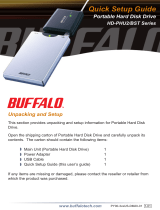
3
Table of Contents
Initial Setup ......................................................................4
Install Software .................................................................8
Accessing LinkStation Data from a PC.............................12
Accessing LinkStation Data from a Mac ..........................13
LinkStation Layout .........................................................18
Advanced Settings ..........................................................20
Network Settings .............................................................24
Domain and AD Settings ................................................. 25
Disk Management ...........................................................26
Shared Folders ................................................................30
Groups ........................................................................... 34
Users ..............................................................................35
Troubleshooting Multiple Shares..................... ................37
Backups .........................................................................39
Maintenance Settings ...................................................... 43
System Status ................................................................48
Client Utility ...................................................................52
Troubleshooting ..............................................................54
Technical Specications ..................................................55
Contact Information (USA) ..............................................56
Contact Information (Europe) ......................................... 57
GPL Information ............................................................. 58




























